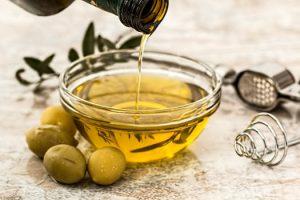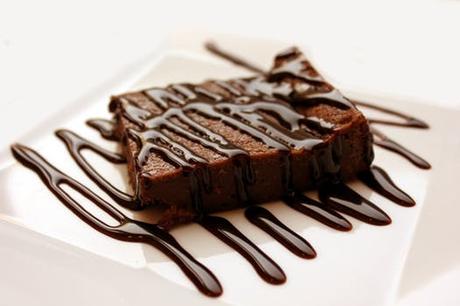
If you run out of cooking oil in the middle of baking, you will have two options; One, either find out what to substitute for vegetable oil or quit!
Let's assume that you quit.
Now, imagine that you had friends waiting in the lobby to munch on your cookies...That would be humiliating!
So: what can you use instead of vegetable oil?
In today's guide, you will learn all you need to about what to substitute for vegetable oil.
And if you dislike vegetable oils (did I hear you say they are unhealthy?), also pull up a chair!
Let's do this.
First, not all substitute for vegetable oil will delight all recipes.
I will show you many substitutes...BUT not all substitutes excite all of your cooking and recipes.
But why, you ask...
Simple! Because some have stronger flavors and can make your food taste different. Others have lower heat points. So, they can't be used to bake.
Shall I show the substitute for vegetable oil baking?
I want to first look first at vegetable oil substitute for brownies...
What Can You Substitute For Vegetable Oil In Brownies?
If you had promised your party some yummy brownies, a couple of fill-ins will save your day.
Here are your saviors:
- Substitute Butter For Vegetable Oil or Melted Margarine.

A brownie or any other baking recipe uses margarine at some point so it goes without saying that if you apply amount equivalent to the one you use for vegetable oil, you should have your brownies going the whole distance.
To retain the same texture and flavor, you may bake the brownie for an extra 2 minutes.
Canola oil is not high in fat and cholesterol so it works well as a substitute for oil in muffins.
But it can change the original taste of your brownies so exercise care.
If you mix cornstarch with water and then heat it to the desired level, then you will have another amazing substitute for vegetable oil.
Remember to wait for it to cool before directly applying it to your chosen brownie recipe.
Yoghurt is healthy and rich in metabolism regulating fatty lipids. It's another excellent substitute for oil in muffins and brownies
Another way to replace vegetable oil is to use a fruit puree.
Do not use strong flavors as they may name interfere with the taste of your brownies.
Full of fine monounsaturated fats, Olive oil is super healthy. It helps lower your heart disease risk and to regulate blood sugar
So, where else can you substitute Olive oil?
You can also use it in marinades or dressings (and basically any other low/medium heat cooking).
Where not to substitute Olive oil:
Recipes that need high heat (It is low smoke point oil) or baking due to its stronger flavor.
Applesauce is a sublime substitute for vegetable oils in brownies.
It is a purée compromising of apples and serves is a low-fat alternative.
To maintain the original flavor plus the texture in your brownies, use the same amount you would have used for vegetable oils.
Substitute For Vegetable Oil In Cake Baking.
"What can you substitute for vegetable oil" if this time if you are baking cake?
Here is what to use instead of vegetable oil one by one;

You may say it's an odd choice but mayonnaise works as a substitute for vegetable oil in cake. Replacement is 1:1.
You see, since mayonnaise is oil mixed with eggs (raw), it makes your baked goodies very moist and gives your cake a terrific taste and texture.
Another thriving vegetable oil substitute for your cake and other baking is coconut oil.
It has a saturated fat-lauric acid- which raises "good" cholesterol.
Where else can it be a substitute for oil?
It withstands high heat so it's flawless for all your high-heat baking and cooking.
And thanks to its vanilla-like flavor, it makes your baked very delicious. Replace cup for cup.
But this very flavor may alter the taste of some recipes. And that means it won't be the perfect vegetable oil alternative for such.
Finally, remember to melt it if your cooking requires liquid oil. That's because it normally solidifies at room temperature.
Mashed ripe bananas also make a favorite vegetable oil substitute for cake
These well-liked fruits are especially high in vitamins and short in calories and risky fats.
Those 2 properties make this substitute fruitful for a big number of bakers.
More to this, bananas make your cakes and even muffins more nutritious.
Remember you may have to add some liquid to smoothen it out.
Lastly, replacement quantity is 1:1.
This is a nice low-calorie option. Try if you're still asking "what can i substitute for vegetable oil"
It makes a fluffy cake, though a little crumbly one but if you're after cutting fat content, diet soda is a hard to beat option.
Simply add 1 can of diet soda in place of your vegetable oil then adjust your liquid accordingly.
Although at first, it looks unlikely; your cake will eventually turn out fine.
Avocado oil is mostly made of oleic acid, another healthy monounsaturated fat.
It's a rich source of antioxidants that counter free radicals in your body.
Again, some studies have shown that it also helps lower blood pressure.
Also, avocado oil may boost the absorption of carotenoid from salads and salsa. Remember carotenoids may reduce your exposure to some cancers.
Having a high heat point, it's great as a vegetable oil substitute for baking, grilling, marinades, dressings, sauces, sautéing, and stir-frying
Replace cup for cup.
Sour cream is also great as cooking oil substitute. It guarantees you mouthwatering cakes.
Still, its high-fat content adds moisture and bounce to your cake!
As you maybe suspecting, substituting vegetable oil in brownies, cakes, and muffins is rather simple.
But you need to be concerned about whether your substitute is mild enough not to impair the original flavor whatever you're baking.
On this, some options are very good:
Coconut oil, mayonnaise, butter, mashed fruit, and applesauce don't mess up with your baking.
They are so good such that you can even go for a combination of these and still end up with a delightful cup cake.
To illustrate, if you need a cup of vegetable oil, go for a half of a mayonnaise cup and a half cup of applesauce.
Let's now talk about olive oil:
While Olive oil is a stellar option in many baked goods, only use the light-flavored option and not the extra-virgin olive oil. The color should help you differentiate.
That you don't want is the dark, deep green version; rather, you want to use the pale olive oil.
Anyway, the darker its color, the deeper its flavor. And a deeper flavor easily overpowers the taste of your brownies.
Besides, brownies perform better with butter, so make it your first choice.
Saturated vs. Unsaturated Fats
Fats fall into 2 major categories: saturated and unsaturated.
Now, Saturated fats are animal-based fats and remain solid while at room temperature.
What of Unsaturated fats?
These come from both animals and plants and at room temperature, remain liquid.
To remain healthy, minimize your intake of saturated fats.
Monounsaturated Versus Polyunsaturated Oils
Unsaturated oils will be either polyunsaturated or monounsaturated. Yes, they differ in terms of chemical composition, but both may help in lowering your blood cholesterol levels.
Here are examples:
Corn, vegetables, and sunflower all make polyunsaturated oils with the only problem being that they reduce both bad and healthy ("good") cholesterol.
On the other hand, olive and canola oils are monounsaturated oils, and the best bit is that they only reduce the bad cholesterol.
It's good to know that we also have unrefined polyunsaturated oils, for example, flaxseed oil.
These contain the heart-healthy Omega-3 fatty acids and so they decrease your risk of getting heart disease and also lower blood pressure.
However, these oils are damaged by high temperatures meaning you can only use them for salads or other non-heating applications and NOT for baking!
Then, you have to refrigerate them to prevent rancidity.
What is a Smoke (heat) Point and what is its Importance?
Heat point is the stage at which heated oils start to smoke.
At smoke point, your oils will begin to emit some unpleasant and frequently toxic smoke as their molecular structure starts to break down.
Toxic and bitter compounds will also be produced affecting both the flavor and nutrition composition of your food.
Still, it is next to flash point, meaning your oils may quickly catch on fire!
So how do you prevent healthy oil from becoming toxic?
This is what you do:
Know the heat point of everything you bake before choosing a substitute. Then, know that:
- High-heat oils have a high heat point and so you should use them for sautéing, deep-frying, and stir-fries.
- Medium-heat oils are for baking, sautéing, roasting, and grilling.
- Low-heat oils shouldn't be applied where heating is involved. They're for cold dishes like dips and salad dressings.
Knowing what to substitute for vegetable oil when cooking can save your baking if you are to run out of vegetable oil.
So, what can you substitute for oil?
Among other popular answers, we have talked in detail about Olive oil, applesauce, and mashed fruits among others.
In short, regardless of what you are baking, you will never again have to ask "what can i use in place of vegetable oil"
Happy baking!

